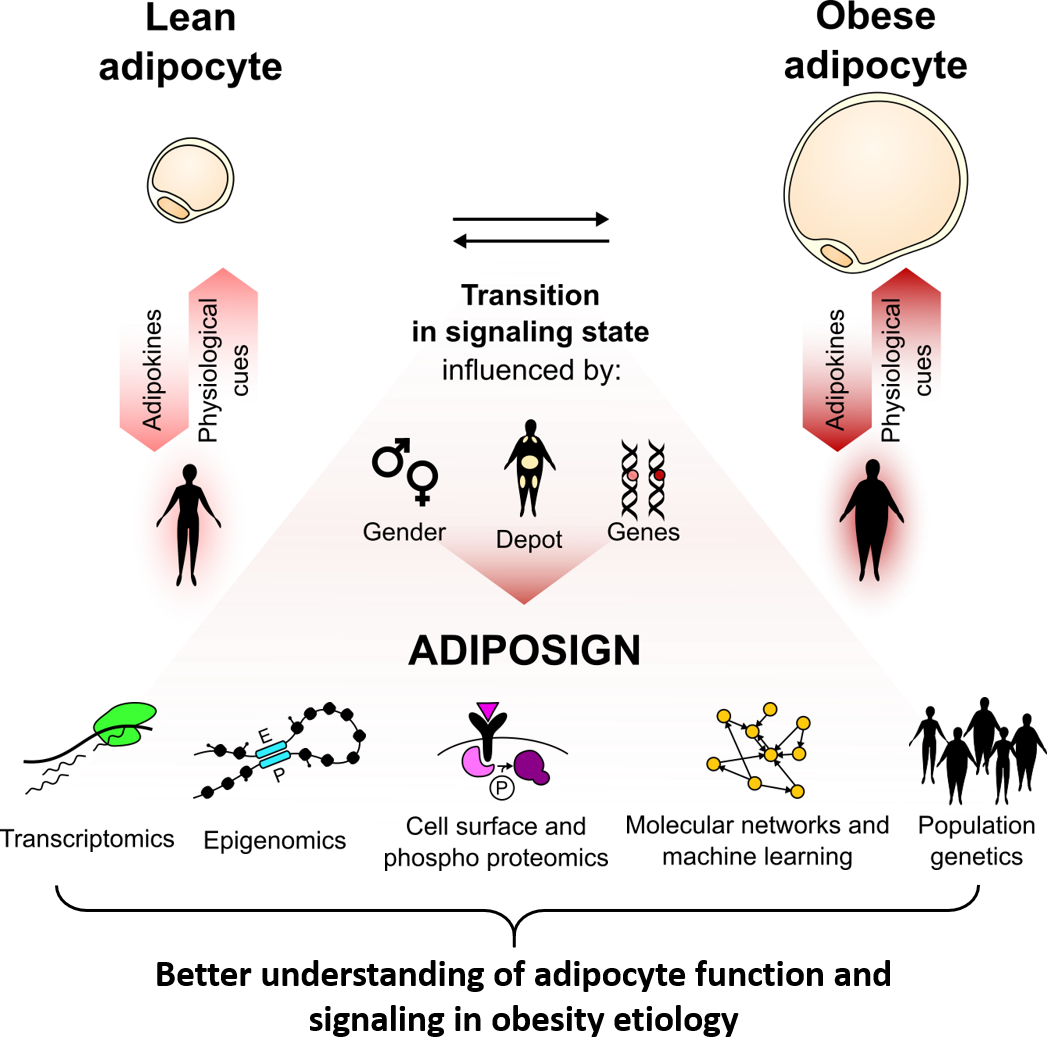The long-term ambition of ADIPOSIGN is to understand the molecular origin of variation in adipocyte function depending on depot, gender, and genetic makeup and to understand how this contributes to the etiology and consequences of obesity in the human population. Insights obtained in ADIPOSIGN will form the basis not only for future drug discovery, and possible treatment strategies, but also for new predictive and preventive strategies for obesity. The experimental and computational approaches in ADIPOSIGN can be applied to uncover the mechanisms of other complex human diseases beyond obesity.
ADIPOSIGN is based on an outstanding team of scientists with highly complementary competences and a common interest in understanding the role and mechanisms of adipocyte signal transduction in obesity disease etiology. Read more about the ADIPOSIGN research groups here.

Figure 1: Adipocytes serve as critical signaling hubs. The ability of adipocytes to receive and relay metabolic signals depend on several factors, including physiological environment, gender, depot, and genetic makeup. The long-term ambition of ADIPOSIGN is to better understand the variation in adipocyte function and signaling depending on these factors, and the contribution of this to the etiology and consequences of obesity. To do so, we will use a comprehensive ensemble of state-of-art methods to map the functional signaling states in lean and obese adipocytes of different gender and depot-origin, along with human genetic data to elucidate how these states depend on natural genetic variance.